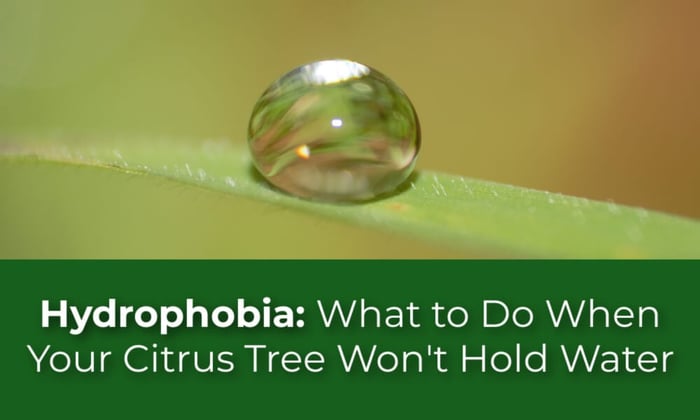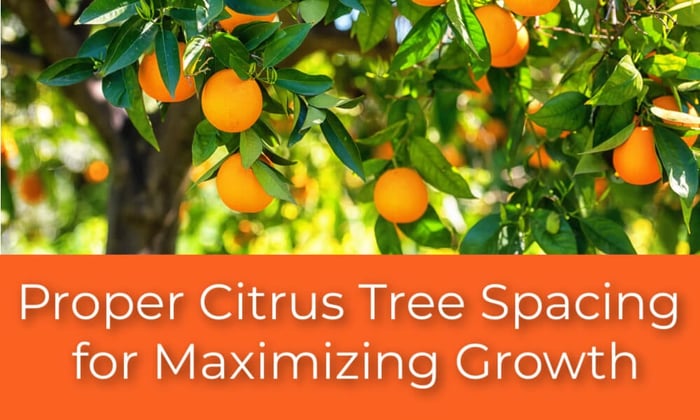Table of Contents
Are Orange Trees Easy To Grow? How to Grow an Orange Tree in Pots
If you’ve ever found yourself wondering, “Are orange trees easy to grow?” the answer depends on your climate and your commitment to meeting their needs. While they’re not quite as hands-off as a fig or pomegranate, orange trees are certainly manageable, especially once you get into a rhythm with their care. And the payoff? Sweet, homegrown fruit and the irresistible scent of citrus blossoms right in your backyard or balcony.
Orange trees can be a beautiful and rewarding addition to any garden, both planted directly in the ground or grown in containers. But as with most citrus, they do require some care and consistency to thrive. Orange trees are classified as subtropical, which means they grow best in warm climates, specifically USDA Zones 9 through 11. For gardeners in these zones, orange trees can flourish outdoors year-round. If you're in a cooler region, don’t worry, potted orange trees can do quite well as patio plants, provided they’re brought indoors during periods of frost.
Sweet oranges, like Valencia and Washington Navel, are popular varieties known for their exceptional flavor and juicing qualities. These trees thrive in locations that offer daily full sun (at least 6–8 hours), moderate temperatures, and well-draining soil. Regular watering is essential, especially during the growing season, though it’s important not to let the roots sit in waterlogged soil. With the right balance of sun, water, and care, a semi-dwarf orange tree can begin producing fruit as early as year four or five.
When it comes to growing citrus trees, many gardeners find that oranges are a bit more finicky than lemons, and for good reason. Oranges tend to be more sensitive to cold temperatures and require more sustained summer heat to develop their full sweetness and flavor. Without enough heat units during the growing season, oranges can stay sour or underdeveloped.
Here are some practical steps to help you grow your own orange tree in a pot:
Variety Selection:
Our grafted semi-dwarf orange trees are perfect for citrus container growing. The rootstock that the tree is grafted onto will help keep it small and compact. A standard orange tree can reach heights of 15', whereas a semi-dwarf tree will stay between 6-10' with annual pruning and maintenance.
Choose an Appropriate Pot:
Use a large pot with good drainage holes. For a Primo sized tree, start with a 10-14" pot. Ensure it's made of a durable material like terra cotta or plastic and has plenty of drainage holes. Click here to see our pots/ planters.
Potting Mix:
Ensure a nutrient rich, well-draining, and chunky soil to promote healthy root development. Lemon trees in containers grow well in a mix of bark and potting soil. A popular combination is 5-1-1 mix, which is 5 parts bark (like cactus or orchid), 1 part citrus potting soil and 1 part perlite. we have a very similar mix available for our customers called the Primo Potting Mix. It is three bags, combined well together, make an excellent potting mix for citrus trees in containers. One order of Primo Potting Mix is enough to pot up 3 Primo sized citrus trees.
Planting:
Plant your orange tree in the pot at the same depth it was in its nursery container. Be sure not to plant your tree too deeply. The root flare, or crown of the roots, should be just visible at the soil line. When you repot, gently remove the tree from the original container and carefully shake the old soil from the roots. Fill your pot with soil mix about 1/4 of the way up and place your new tree in the center. Backfill and wiggle your tree as you go, ensuring that there are no air gaps under the surface. Water deeply after planting.
Sunlight:
Place the potted orange tree in a location where it will receive at least 6-8 hours of direct sunlight daily. A south facing location is ideal.
Watering:
Provide regular, deep watering to keep the soil consistently moist but not waterlogged. Allow the soil to dry out slightly between watering intervals. The frequency that you water will depend on the climate and how fast the water is absorbed by the root system. In pots, check to see if your tree needs water by inserting your finger into the soil. If the top 2" are dry, it is time to water. (Click here to read about Deep Watering vs. Overwatering of Citrus Trees)
Fertilization:
Use a balanced, slow-release fertilizer suitable for citrus trees. Follow the manufacturer's instructions, typically applying in spring and late summer. We recommend Romeo Fertilizer or G&B Organics Citrus and Fruit Tree Fertilizer.
Pruning:
Regular pruning helps maintain the tree's shape, encourages airflow, and promotes fruit production. Prune any dead or damaged branches and thin out overcrowded growth. To encourage branching at the tips, prune at the branch's node, which is the bud between the stem and the leaf.
Pest and Disease Control:
Keep an eye out for pests like aphids, scale insects, or mites. Treat any infestations promptly with products like neem oil or insecticidal soap.
Cold Protection:
If you live in a region with cold winters, bring your potted orange tree indoors or provide frost protection during the colder months. You can read more about doing that here. Orange trees do not do as well as indoor plants as lemon and lime trees. If you plan to keep your tree inside for the majority of the year, a sour citrus fruit like lemon, kumquat or lime may work better for your enviroment.
Repotting:
As your orange tree grows, you may need to repot it every 2-3 years into a slightly larger container to accommodate its root system.
Harvesting:
Depending on the variety, oranges typically take 6-12 months to ripen. Harvest when the fruits are fully colored and feel firm but slightly springy to the touch.
Remember that growing orange trees in pots can be more challenging than planting them in the ground because they are more sensitive to environmental changes. Consistent care and attention to their needs will help ensure a healthy and fruitful orange tree.




